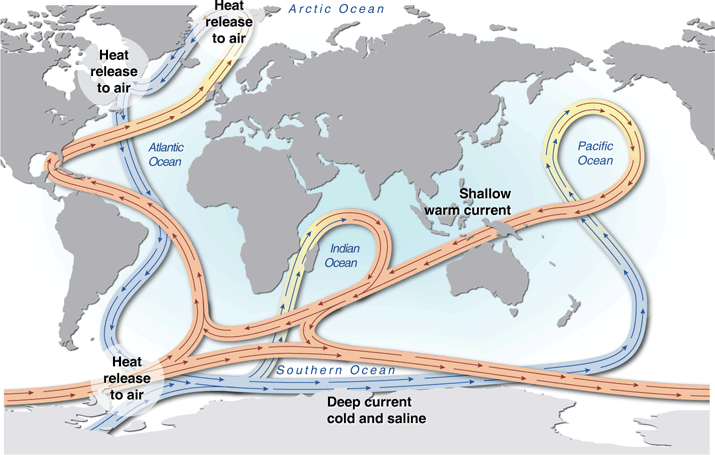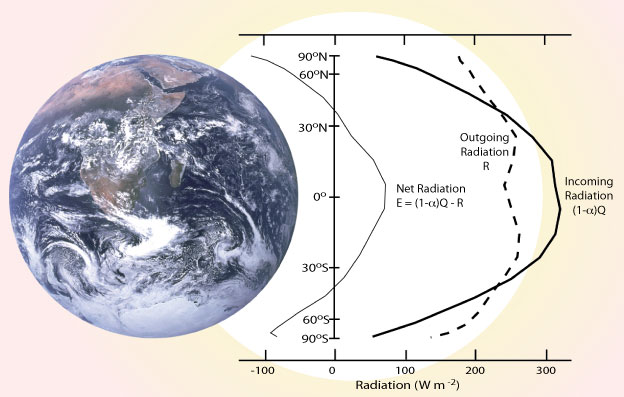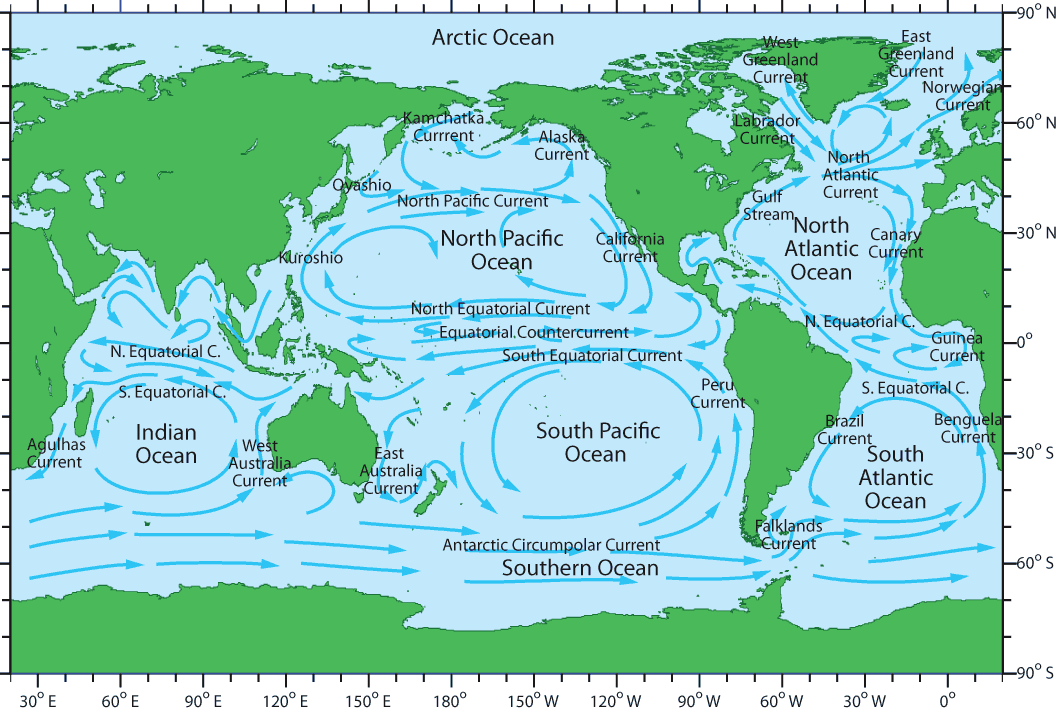3. Cooling the Tropics and Warming High Latitudes
The Earth's radiation budget
The Earth is continually receiving radiant energy from the sun; most of this in the visible (short wave) part of the electromagnetic spectrum. At the same time it loses radiant energy (long-wave, thermal radiation) to space. The Earth's radiation budget is the account of this input and output of energy.
The figure on the right shows the radiation budget for different latitudes.
- How does the budget at high latitudes differ from that in the tropics?
- How would you explain this difference?
There are three main mechanisms for heat transport.
- In the atmosphere:
- through the movement of warm and cold air masses (winds)
- as latent heat in water vapour: water evaporates from the ocean in the tropics and is released at higher latitudes when the vapour condenses into clouds, rain or snow.
- In the ocean: by a system of warm and cold currents
A system of surface and deep currents
The system of surface and deep currents that cools the tropics and warms high latitudes is sometimes called the global conveyor because it acts as a giant conveyor belt that transports heat, salt, nutrients and dissolved gases such as carbon dioxide and oxygen around the world's ocean.
The conveyor is powered by two different ‘engines’.
- Movement in the top few hundred to a thousand metres is driven mainly by the winds, hence its name: the wind driven surface circulation.
- The vertical circulation is driven by differences in the salinity and temperature of seawater; hence it's name: the thermohaline circulation, or THC. (thermo ~ temperature; haline ~ salty).
The flow we can measure is a combination both systems.
Wind driven surface currents
If you have read chapter 2 you will recognise the map on the right. It shows the wind driven circulation with its five subtropical gyres, the Antarctic Circumpolar Current, and two subpolar gyres in the northern hemisphere.
The thermohaline circulation (THC).
In contrast to the wind driven circulation the THC also involves flow in the deep ocean. It is the result of water cooling and sinking at high latitudes, and slowly returning to the surface through vertical mixing. The journey around the conveyor typically takes hundreds of years.
- Where does deep water form by sinking from the surface?
- If ‘new’ deep water is water that has recently left the surface, in which ocean do you find the oldest deep water?
- How does the Atlantic's role in the THC differ from those of the Pacific and Indian oceans?



